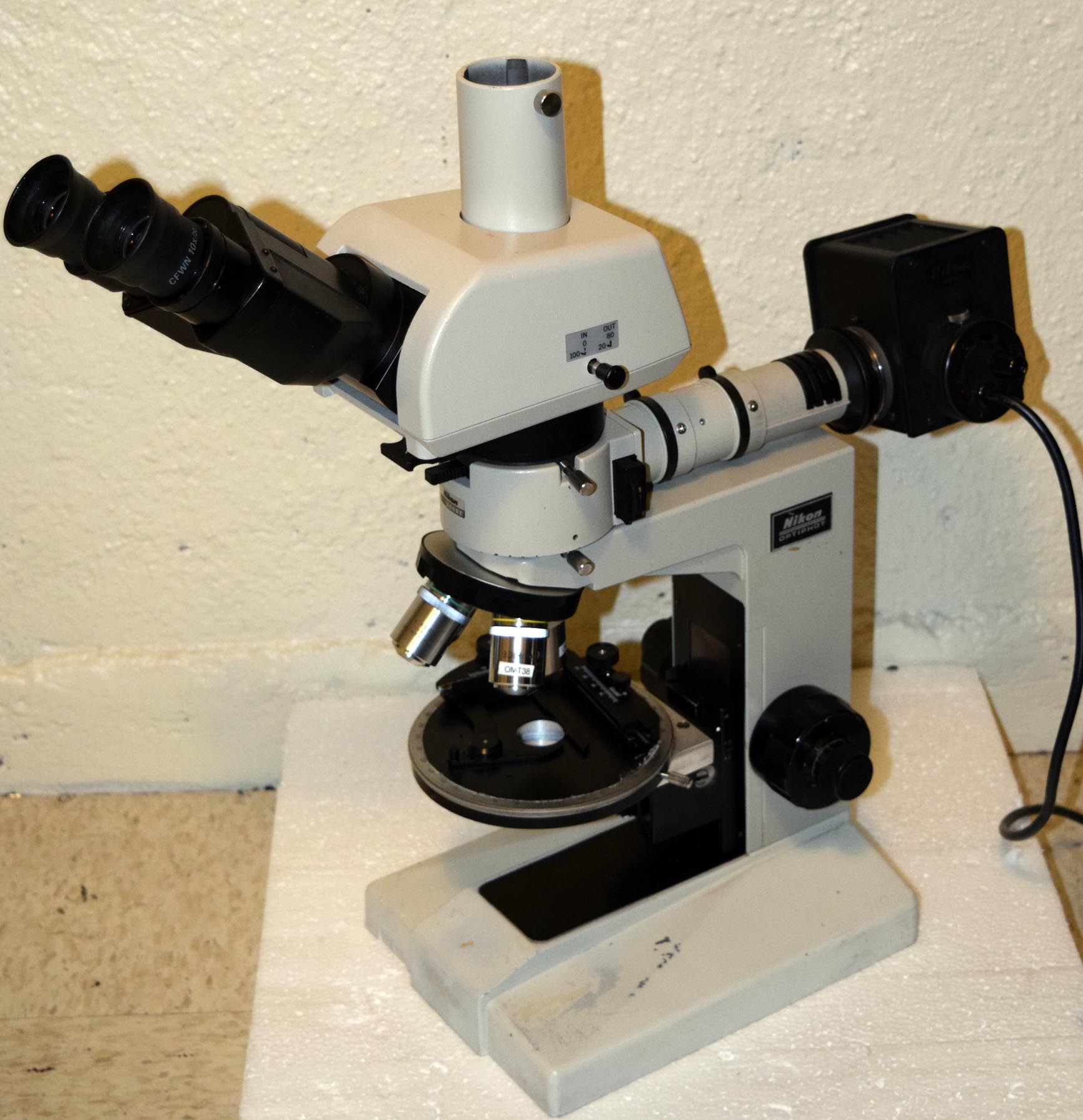The Nikon Optiphot series of microscopes, produced in the 1980's, were top-of-the-line upright research microscopes. In general, they are built like tanks and it is not uncommon to see them still used everyday in real working environments. The Optiphot series is expandable, for phase contrast, polarization, DIC, episcopic illumination and epi-fluorescence.
The Labophot and Optiphot series were nearly contemporaries, with the Optiphot being the earlier, and more capable of the two. The principal upgrades from the Labophot series are improved, brighter built-in diascopic illuminator, the ability to adjust the specimen stage height, accomodating a greater variety of objective parfocal distances, larger condensers, or tall specimens, and a removable objective turret.


The instrument shown here is for episcopic illumination, with the no light source at all in the base - an episcopic illuminator must be added, unless you plan on lighting from the side. This one includes a rotatry stage and a rotatable polarizer in the vertical illuminator.


The Optiphot 2 has a more rounded appearance, slightly less utilitarian. The instrument shown below has the Epi-Fluorescence attachment with a mercury arc lamp (In the background is a Labophot with episcopic illumination as well as diascopic).

One of the principal points of failure is the condenser stage, with a rack and pinion drive. The pinion gear is made of plastic and has a tendency to snap. The fine focus gear is also plastic and tends to snap.
The Optiphot manual may be useful. I think they called the purely diascopic version (bottom light) the biological microscope, the episcopic version (top light) a metallurgical microscope, and if it had both, plus polarization modifiers, then it is called mineralogical. I am unsure exactly what models of the Optiphot and Optiphot 2 were officially produced, but I have definitely seen versions with no top light, and versions with no bottom light. There is also the "Pol" version (manual), with a circular stage and polarization components installed.
The Optiphot line was one of the primary instruments used in the integrated circut manufacturing process, with excellent episcopic illumination capabilities, and an increasingly large capacity lineup, including the models 100, 150, 66 (manual), 88, 200 and 300, which had stage ranges of 100 mm, 150 mm, 6x6" (~150 mm), 8x8" (~200 mm), 200 mm and 300 mm, for the increasingly large wafers produced. I think that the 100, 150, 200 and 300 series are infinity corrected, where the others use finite conjugate objectives.
The Optiphot 1 (metallurgical) that I have has a stage travel range of 70 mm x 101 mm, which is a fairly good range for most work.
I partially disassembled the Optiphot 2 here.